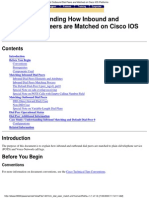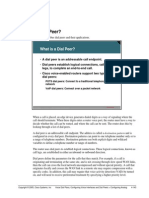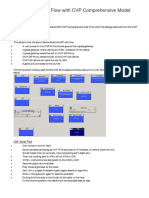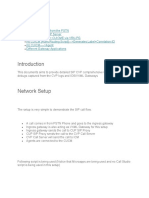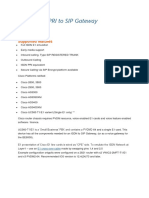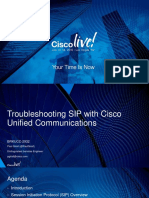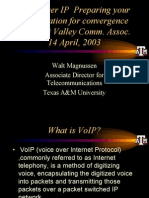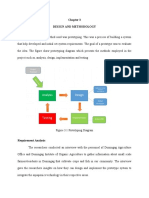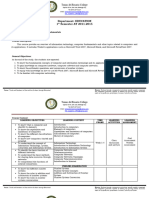0% found this document useful (0 votes)
26 views18 pagesDiscovery 14: Examine Cisco IOS Gateway Inbound and Outbound Dial-Peer Functions
The document details the configuration and functionality of Cisco IOS gateways, specifically focusing on inbound and outbound dial-peer selection for VoIP calls. It outlines the process for setting up dial peers, the criteria for their selection, and includes practical tasks for testing these configurations. The lab involves registering endpoints, exploring dial-peer selection based on various parameters, and analyzing debug outputs to verify the correct dial peers are used during calls.
Uploaded by
Dúber PérezCopyright
© © All Rights Reserved
We take content rights seriously. If you suspect this is your content, claim it here.
Available Formats
Download as PDF, TXT or read online on Scribd
0% found this document useful (0 votes)
26 views18 pagesDiscovery 14: Examine Cisco IOS Gateway Inbound and Outbound Dial-Peer Functions
The document details the configuration and functionality of Cisco IOS gateways, specifically focusing on inbound and outbound dial-peer selection for VoIP calls. It outlines the process for setting up dial peers, the criteria for their selection, and includes practical tasks for testing these configurations. The lab involves registering endpoints, exploring dial-peer selection based on various parameters, and analyzing debug outputs to verify the correct dial peers are used during calls.
Uploaded by
Dúber PérezCopyright
© © All Rights Reserved
We take content rights seriously. If you suspect this is your content, claim it here.
Available Formats
Download as PDF, TXT or read online on Scribd
/ 18
